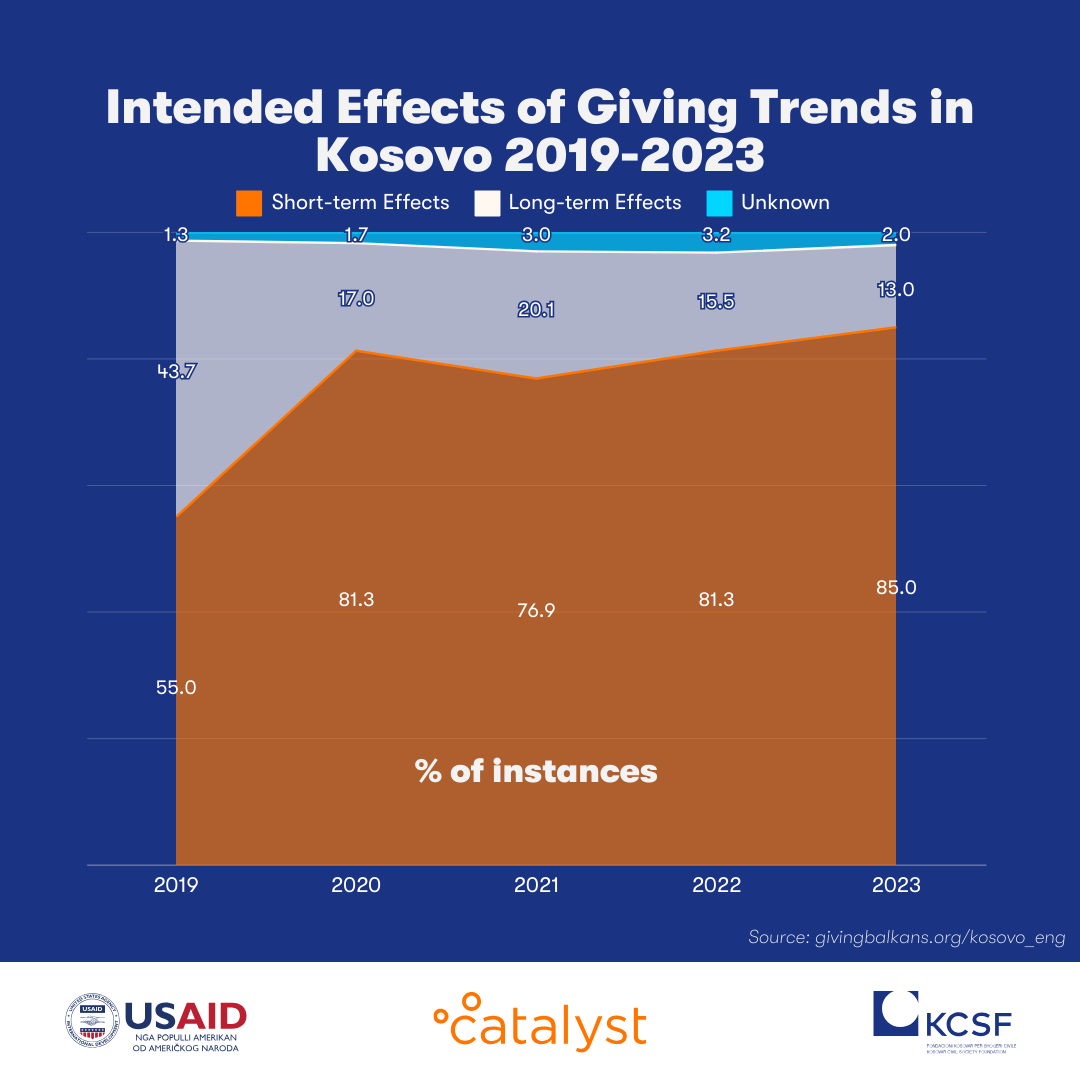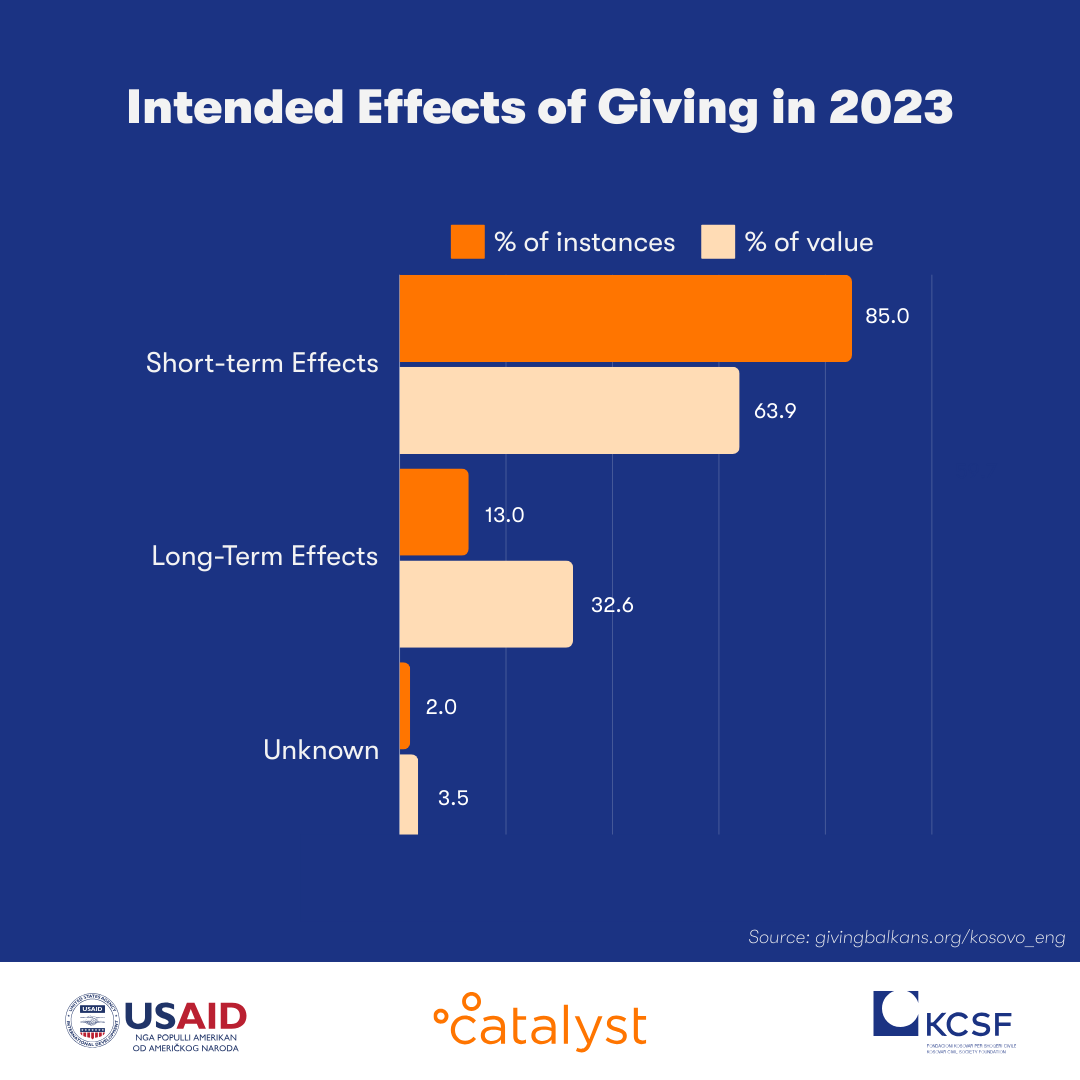The intended effects of giving are impacted by the country's socio-economic conditions and the availability of resources to address both short-term and long-term impacts. With the increasing needs of the socially vulnerable population, there has been a rise in donating for short-term effects. While percentages have been slightly changed compared to 2022, giving with both short-term and long-term effects has mostly maintained a consistent level, both in terms of frequency and value.
Graph 1. Trends in intended Effects of Giving in Kosovo – 2019 – 2023 (% of instances)
Download the infographic in PDF
Breakdown of Short-Term and Long-Term Intended Effect Giving in 2023
Giving for short-term causes accounted for 85% of all donation instances and 63.9% of the total donated amount, mirroring the previous year's levels.
Most of the recorded instances for these causes were for individual housing (41.1%) and supplies (39%), with medical treatments comprising 8.2% of all instances, showing no significant change compared to the previous year's distribution. In terms of donation value, the largest percentage (46.3%) was allocated for the provision of individual housing, followed by 29.7% for humanitarian support. The increase in humanitarian assistance value from 2022 was notable, driven by fundraising efforts to address the disaster effects of floods in Skënderaj and Mitrovica, resulting in nearly 1.5 million euro collected for this specific cause. Support for medical treatments accounted for 17.9% of the value recorded for short-term effect giving, maintaining the same level as the previous year.
Graph 2. Giving by Intended Effects in 2023
Download the chart in PDF
In 2023, long-term effect giving accounted for 13% of all recorded donation instances and 32.6% of the total donated amount. The most common use of donations was for equipment, representing 46.2% of total strategic instances, followed by scholarships at 37.8%. Of these scholarships, 91% were directed to individual recipients, with the remainder allocated to educational institutions. Equipment donations included orthopedic aid to nonprofits assisting individuals with disabilities and direct beneficiaries, and equipment donated to healthcare and educational institutions.
In terms of donated values, there was a significant shift in the focus of long-term effect giving. The recording of a 2-million-euro donation for the construction of a home for the elderly resulted in 70.6% of strategic donations being allocated as capital investment. Consequently, the percentage attributed to equipment value decreased to 19.6%. Nominally, the value donated for equipment dropped from 986.000 euro to 557.000 euro in 2023.
This report is made possible by the generous support of the American people through the United States Agency for International Development (USAID). The contents are the responsibility of Catalyst Balkans and do not necessarily reflect the views of USAID or the United States Government.




Leave a comment